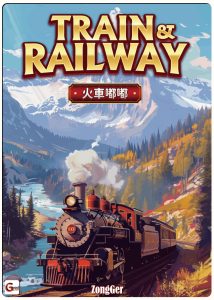 My entry into the board gaming world… many, many, years ago, was Ticket to Ride. Train games still dominate my collection. From some Ticket to Ride variants to cube rails games and a handful of 18XX titles, they really run the gamut in terms of type and complexity.
My entry into the board gaming world… many, many, years ago, was Ticket to Ride. Train games still dominate my collection. From some Ticket to Ride variants to cube rails games and a handful of 18XX titles, they really run the gamut in terms of type and complexity.
Today, we are looking at Train & Railway, a unique take on the train genre from Taiwanese board game publisher Good Game Studio.
Gameplay Overview:
Each game of Train & Railway starts with a unique map. These maps designate your starting train areas as well as the presence of goods and cities on the map. There are 20 unique maps included in the game. You’ll draw on these during the game, which means you’ll have to print new copies (available online) or do some lamination if you play more than that.
On your turn, you’ll first take a main action. You may:
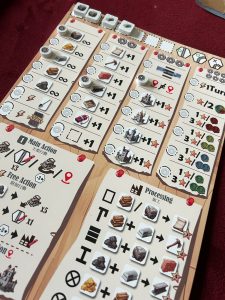
After your main action, you can take a location action if your train is adjacent to a map hex. If you are adjacent to a resource, you can gather that resource. Factory hexes can process resources into finished goods. And if you are next to a city and have a contract for a particular good, you can sell it to them for victory points. Players will each have a secret contract as well as public contracts available that anyone can fill.
You can also consume resources to move your train in addition to your regular action or build new factories on the map to process goods.
As you acquire victory points during the game, you will unlock upgrades. These allow you to be more efficient in gathering resources, processing them into goods, or give you additional end-game scoring bonuses.
Once a player gets to 25 points, finish the round and play two additional rounds. Then, the player with the most points wins!
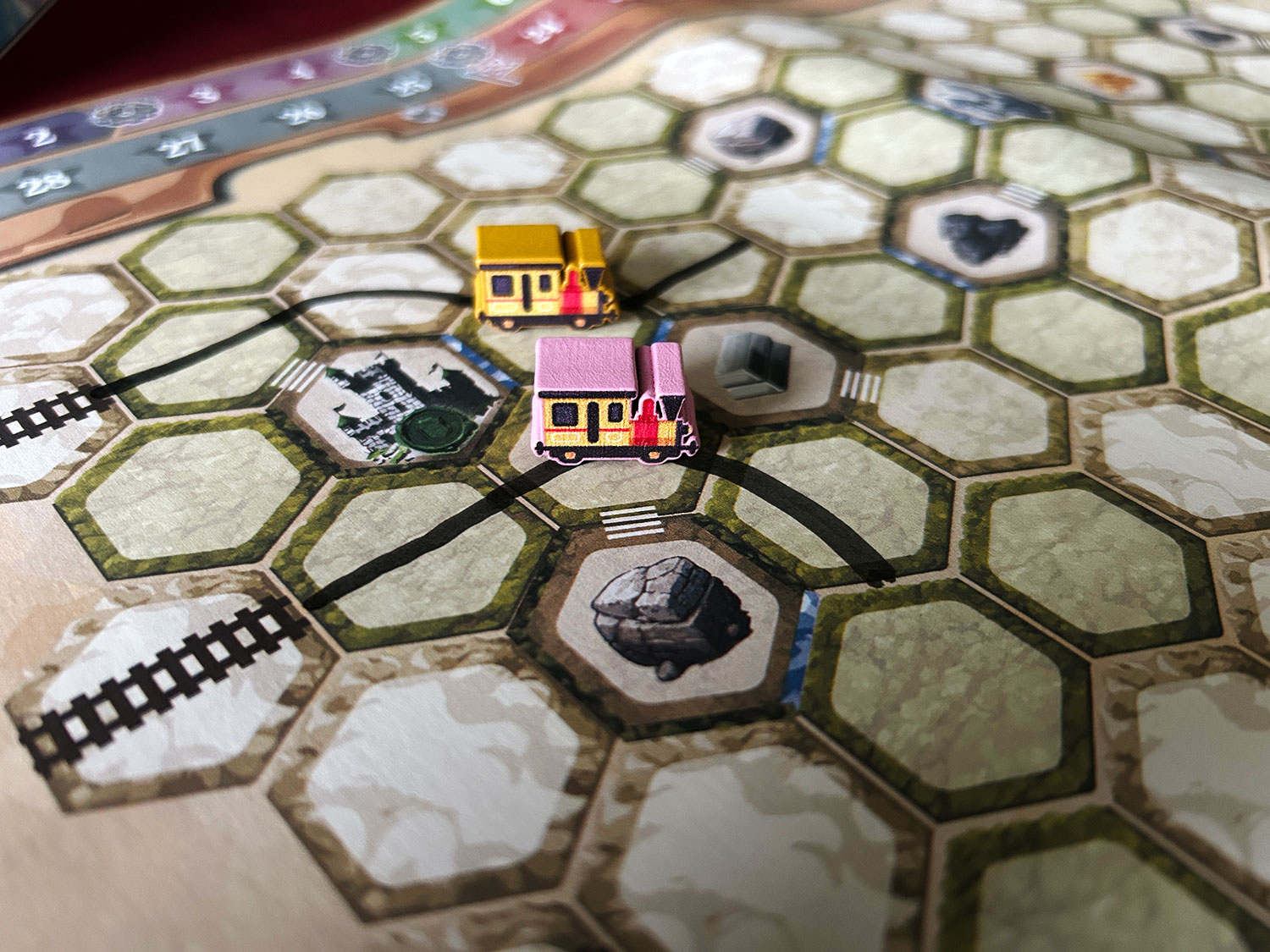
Game Experience:
Train & Railway is very much a pick-up and deliver style of train game. The cycle of the game is very straightforward: get resources, convert to goods, sell them to cities. Rinse. Repeat.
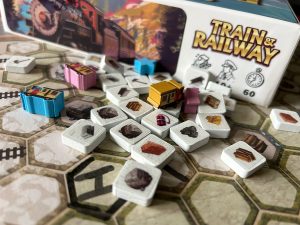
But the route building to accomplish this is quite open ended. In fact, you draw the routes as you go so its wide open in how to move things around. Most maps have only a couple of each resource available so it’s important to plan on how to circle around and make sure you can gather everything you need. You are limited in how many resources you can hold at any given time.
Of course, you can just turn your train around if needed, but you lose three points every time you do. It’s a painful cost and you shouldn’t rely on it as a primary mode of revisiting locations around the map.
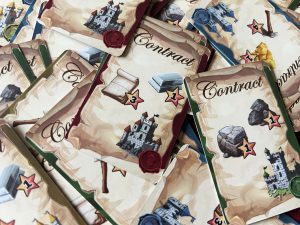
Each different map offers a unique layout. While I think 20 maps is plenty for most folks, it is a little awkward knowing you will eventually no longer be able to play. It’s possible laminating is the answer. I’ve tested laying plexiglass over the map and using a dry erase marker as a solution. This works, but when things move around it’s a little annoying.
I did prefer the game with three players mostly due to the length. The game relies on a somewhat repetitive cycle and once it goes on much longer than an hour, I was ready for it to be done. Less players allows a more open map, less blocking, and a quicker play time.
Final Thoughts:
Train & Railway offers a unique take on pick-up and deliver driven by being able to add the routes and factories on the map yourself. The paper maps limit the number of times you can play but offer a fun puzzle each time.
But nothing here really revolutionizes the gameplay. It is very much a process of cycling through resources, goods, and points. The upgrades you can unlock along the way do allow that cycle to become more efficient as the game goes on. But if that repetitive aspect of pick-up and deliver style games has never clicked with you, this one isn’t going to change your mind.
Final Score: 3.5 Stars – Pick-up and deliver with a drawing twist.
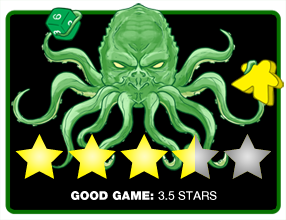 Hits:
Hits:
• 20 Unique maps with different layouts.
• Players create factories and routes on the board as they go.
• Upgrades allow players to create unique engines each game.
Misses:
• Can get repetitive, especially at max player count.
• If you love the game you’ll need to find a way to play it more than 20 times.



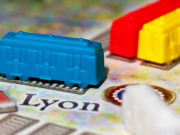
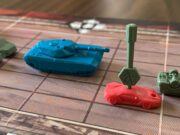

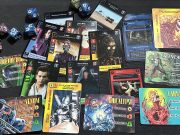














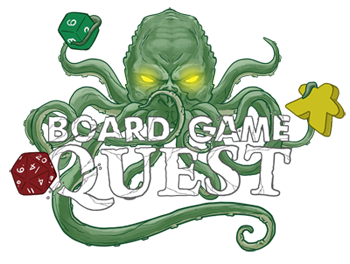
Good Game Studio is Taiwan publisher and designer also Taiwanese.
Thanks! Not sure why I misremembered that. I’ve updated it in the article.